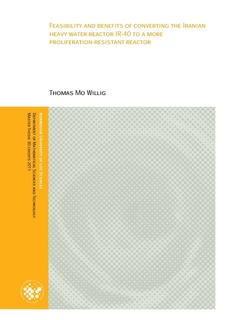Feasibility and benefits of converting the Iranian heavy water reactor IR-40 to a more proliferation-resistant reactor
Master thesis

Åpne
Permanent lenke
http://hdl.handle.net/11250/188827Utgivelsesdato
2012-04-27Metadata
Vis full innførselSamlinger
- Master's theses (RealTek) [1722]
Sammendrag
This thesis examines a policy proposal presented by former Deputy Director-General for Safeguards in the International Atomic Energy Agency, Olli Heinonen, as a means to get Iran back to the negotiation table over its nuclear program. He proposes modifying the Iranian heavy water research reactor IR-40, so that it uses low enriched uranium instead of natural uranium as fuel, thereby making the reactor less suitable for weapons-grade plutonium production, and more suitable for useful radioisotope production. This thesis concretizes Heinonen’s proposal, suggesting a conversion of the IR-40 reactor
from using natural uranium to using low enriched uranium fuel. The original reactor, as well as the proposed modified reactor is modeled using SCALE 6.1, a reactor simulation program developed by Oak Ridge National, to determine if this conversion is feasible, and to estimate the potential for plutonium and radioisotope production in both configurations. Various methods are used to estimate the current design of the reactor and use the parameters
deduced for that reactor as a basis for a converted reactor. A proposal is also made to cap Iran’s enrichment capacity to a level where Iran can replace the yearly demand for the converted IR-40 reactor with enriched uranium. This could ease tensions regarding Iran’s enrichment program and the focus of diplomacy could shift to confidence building between
Iran and the IAEA.